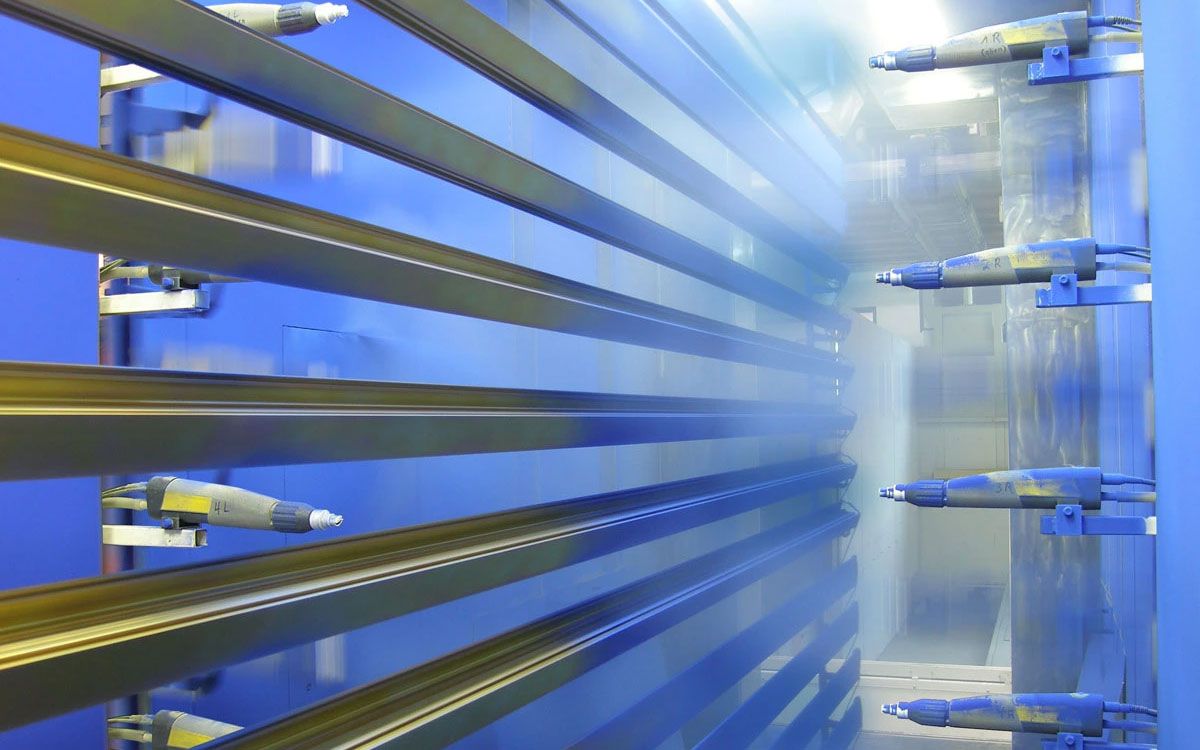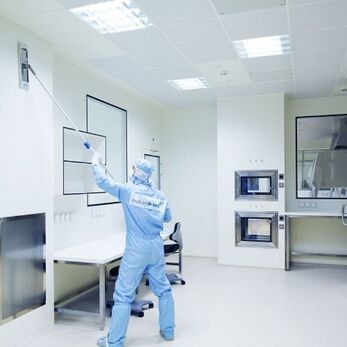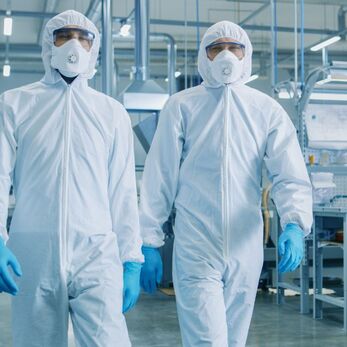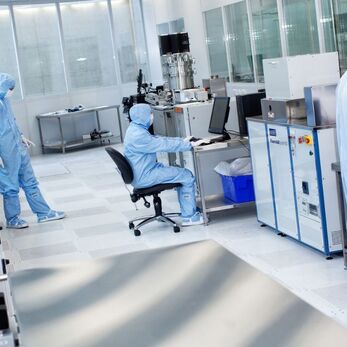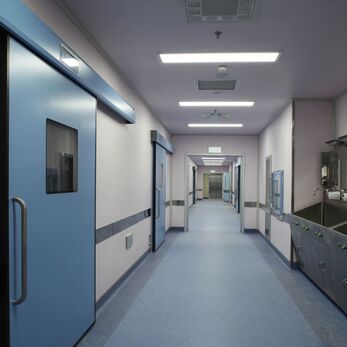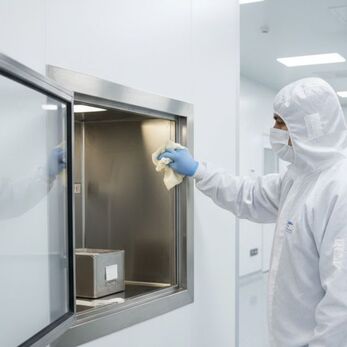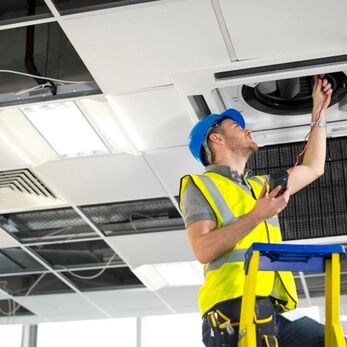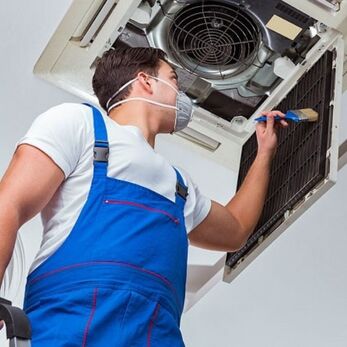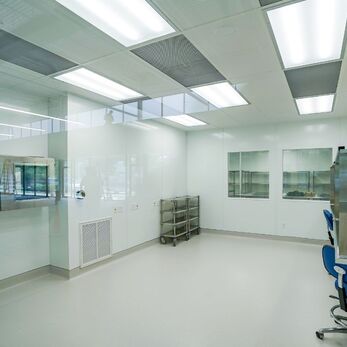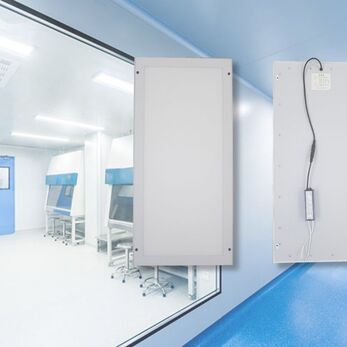Anodizing, Electrostatic painting and E-coating
Currently, there are quite a few aluminum finishing methods, among which Anodizing and Electrostatic painting stand out, and a relatively new method is E-coating.
So what are these three methods and what are their pros and cons, as well as which type of aluminum should be chosen? Let's find out with Vietnam Cleanroom right below.
What is Anodizing?
Anodizing is an advanced aluminum surface treatment method that uses electrochemical processes to increase the thickness of the natural oxide layer. As a result, the properties and aesthetics of aluminum are significantly enhanced, meeting diverse needs in various fields such as daily life, industry, and construction.
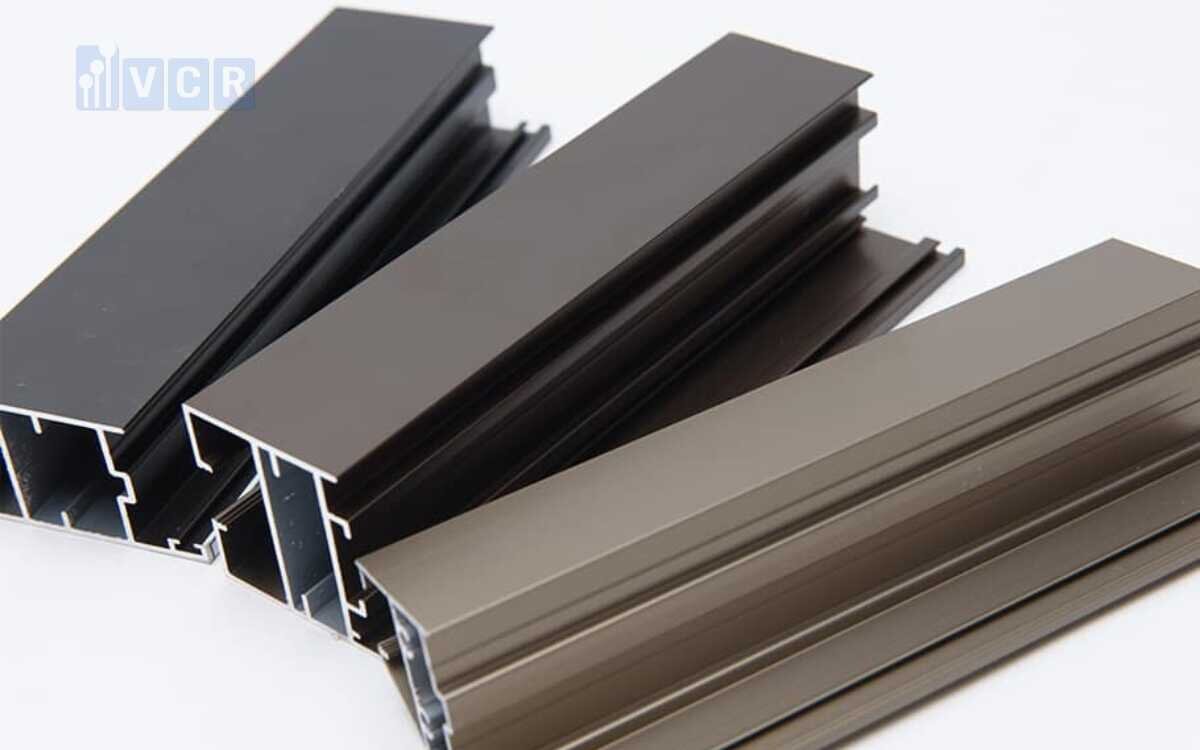
Anodizing process
The process is called anodizing because the part to be treated forms the anode electrode of an electrolytic cell.
There are 4 major steps involved in the Anodizing process:
Step 1: Pre-treatment
The pre-treatment process aims to achieve a clean work part with a visible finish.
- Cleaning: This step is crucial for removing residual grease, oils, and other impurities left from previous fabrication processes like extrusion or CNC aluminum machining. Proper cleaning prevents impurities and inconsistencies in the finished part.
- Etching: The initial surface finish of a part influences the final anodized result. Etching corrects minor surface imperfections and prepares the part for anodizing, ensuring the desired surface finish is achieved.
Step 2: Anodic Oxide
Once the surface is prepared, the parts undergo the anodizing process. They are submerged in a bath of sulfuric acid electrolyte solution, which varies depending on the anodizing type. This solution, rich in positive and negative ions, is electrically conductive.
The positive ions attract the negative plates, while the negative ions are drawn to the positive anode. An electric current in the circuit facilitates this process. The negative ions attract the aluminum parts, which act as the positive anode. A cathode installed in the tank enables an active electrical current, releasing oxygen ions from the electrolytic solution. This creates an aluminum oxide layer, also known as a barrier layer, which is rougher than the original aluminum surface.
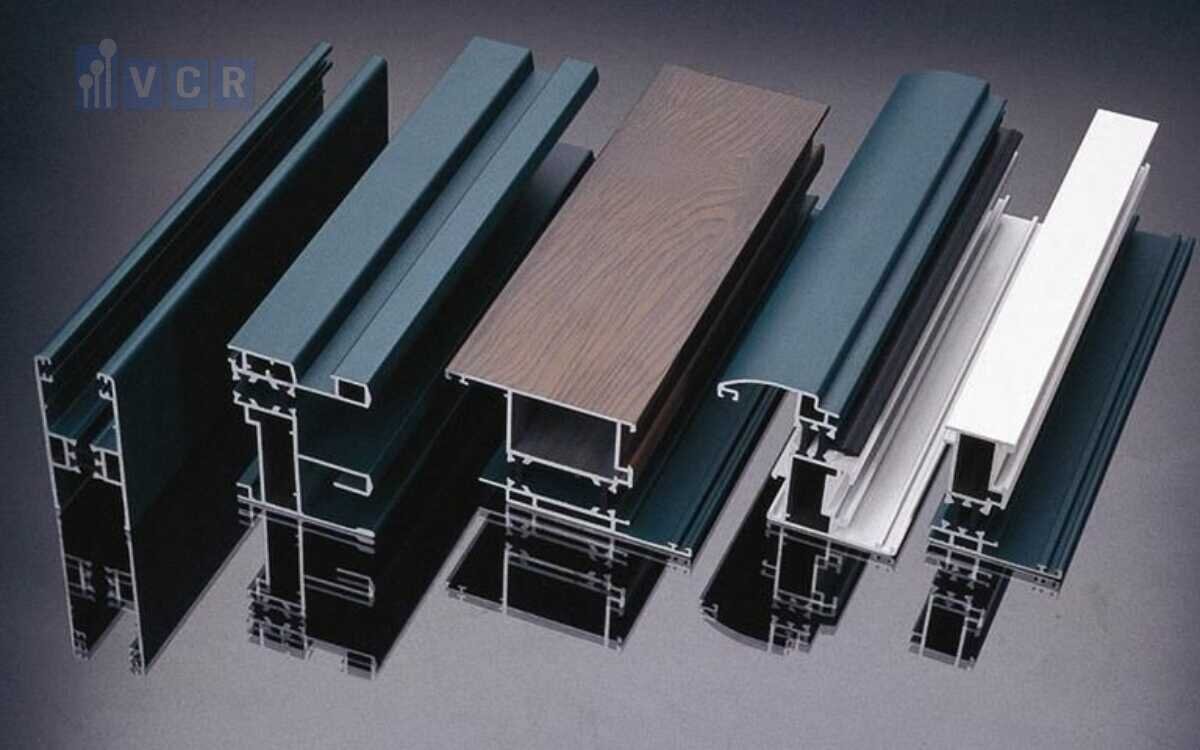
Step 3: Coloring
The anodic coating formed on the surface is porous, allowing the addition of color. Colors are added by submerging the anodized parts into dyes or dissolved metal salts, achieving finishes like black anodized aluminum, gold, nickel, and stainless.
Step 4: Sealing
To close the porous surface created during anodizing and provide a uniform finish, the parts undergo a final step where they are submerged in a nickel acetate solution. Sealing ensures long-lasting color and prevents further corrosion of the anodized part.
Benefits and key features
- Strength and Durability: Anodized aluminum offers lasting protection without peeling or chipping.
- Aesthetic Flexibility: Anodizing provides a wide range of coloring and decorative finish options, offering extensive aesthetic choices.
- Enhanced Adhesion: The anodizing process improves the adhesion of paints and glues.
- Non-toxic: The process utilizes non-hazardous materials, making it generally more environmentally friendly.
Common applications
- Anodizing is crucial in aviation, where weight and durability are paramount
- It is also employed in surgical instruments and other medical devices for its resistance to wear and biological contamination
- Kitchen utensils and cookware frequently use anodizing to achieve a smooth, non-reactive surface.
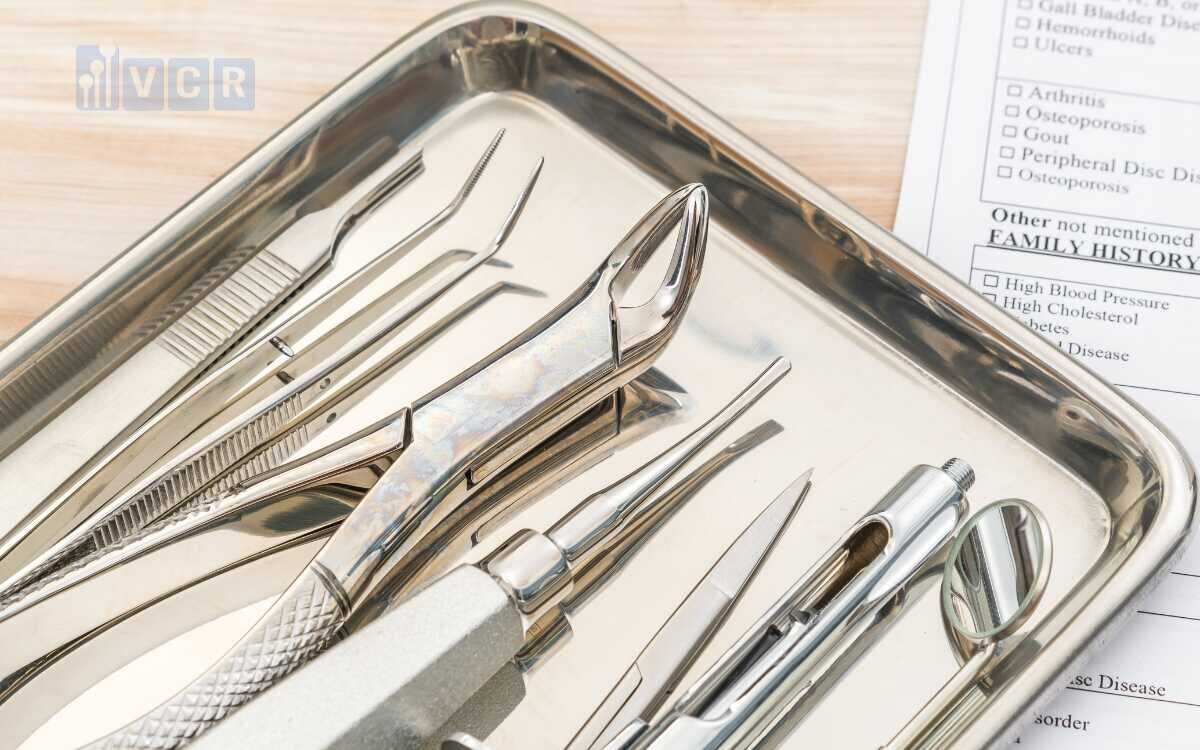
What is Electrostatic painting?
Electrostatic painting uses a magnetic field to apply paint to metals and various plastics. This process operates on the principle that "opposites attract." By charging the object to be painted negatively and the paint positively, an attraction is created, resulting in a durable, smooth, and hard paint finish that adheres like plating.
Electrostatic painting process
- Powder Coating: Powder paint is sprayed onto the material surface using a specialized spray gun.
- Thermal Fusion: The powder paint is heated, forming a tightly bonded layer with the metal surface.
- Electrostatics: The paint layer and the material are oppositely charged, creating an attractive force that evenly adheres to the powder paint.
- Finishing: The melted paint layer forms a smooth, durable protective coating.
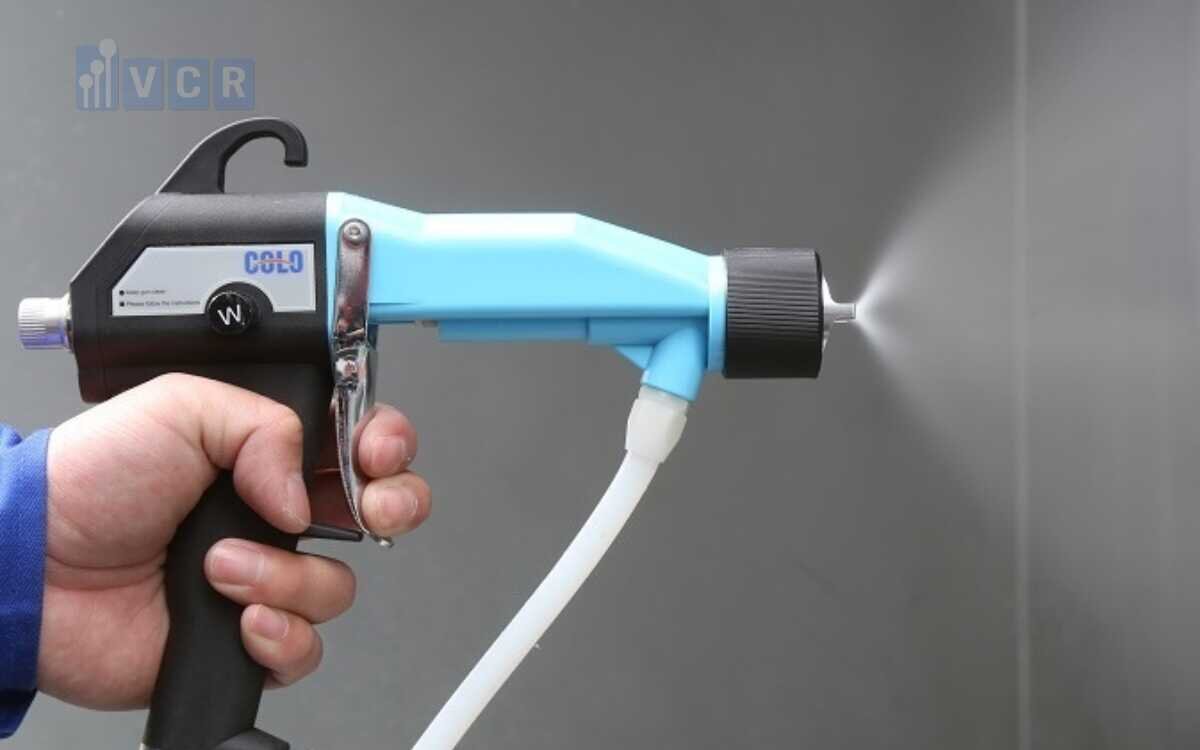
Benefits and key features
- Portability: Electrostatic painting can be conducted on-site, revolutionizing the treatment of large or delicate parts, eliminating the need for disassembly, and accommodating components intolerant to powder coating curing heat.
- Time Efficiency: Items painted electrostatically are ready for use within hours, minimizing downtime and transport disruptions associated with off-site coating.
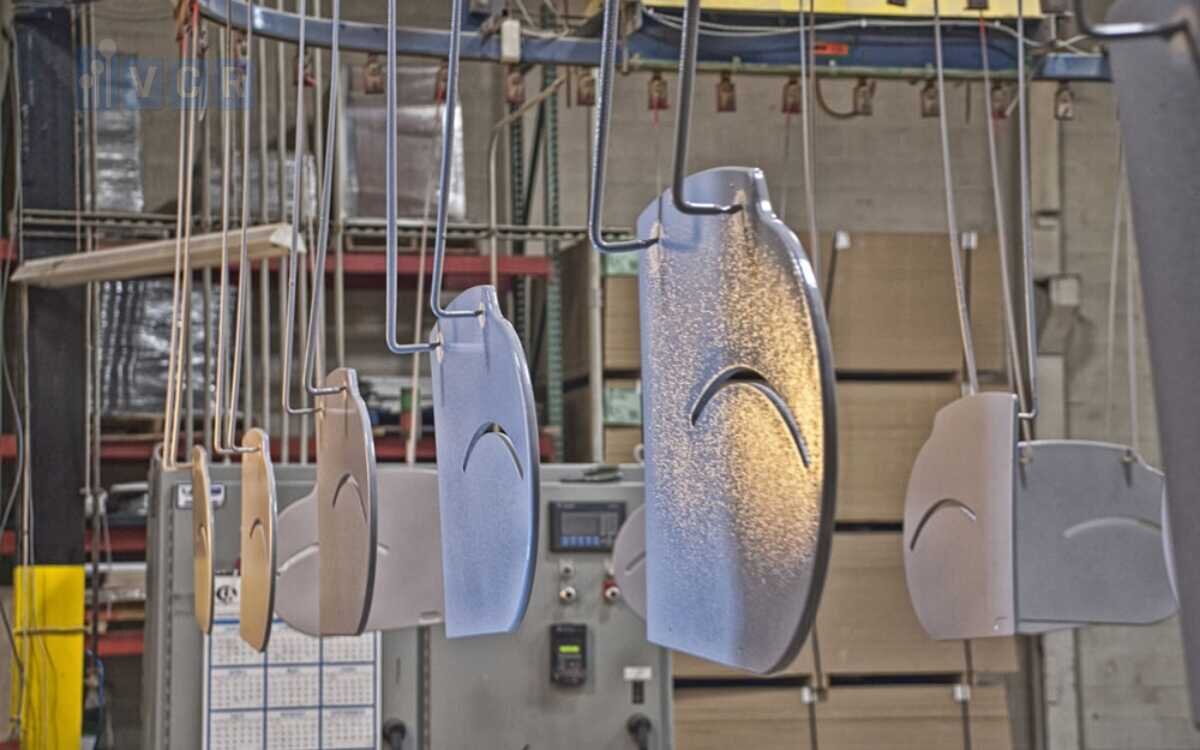
- Waste Reduction: The electrostatic bond attracts paint during spraying, minimizing overspray, enhancing process cleanliness, and reducing material costs.
- Uniform Coating: The electrostatic bond ensures a smooth, even coat, free from runs, bubbles, or drips common in traditional painting methods.
- Durability: Almost as robust as powder coating, the ionic bonds between paint and metal surface create a resilient finish capable of withstanding use and environmental exposure.
Common applications
- Enhancing aesthetics and protection for wheels, bumpers, and various parts.
- Providing sleek, durable finishes in appliances and gadgets.
- Ideal for coating window frames, railings, and other architectural elements.
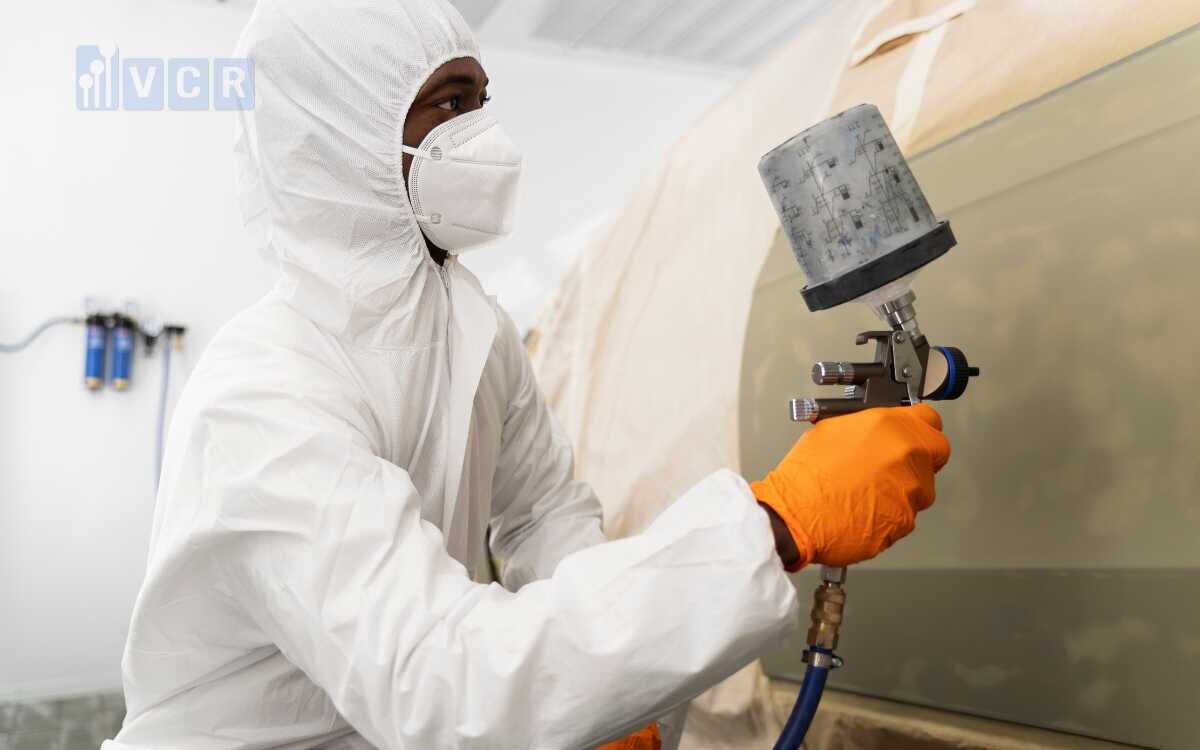
What is E-coating?
Electrocoating (E-coating) is an advanced method for creating a protective Polymer coating on metal surfaces. This process occurs in a water-based solution under the influence of direct current, typically lasting from 20 to 180 seconds. The electrocoating film, when subjected to curing at temperatures ranging from 130 to 190 degrees Celsius, depending on the type of base paint such as Acrylic or Epoxy, results in a glossy, beautiful, and durable surface.
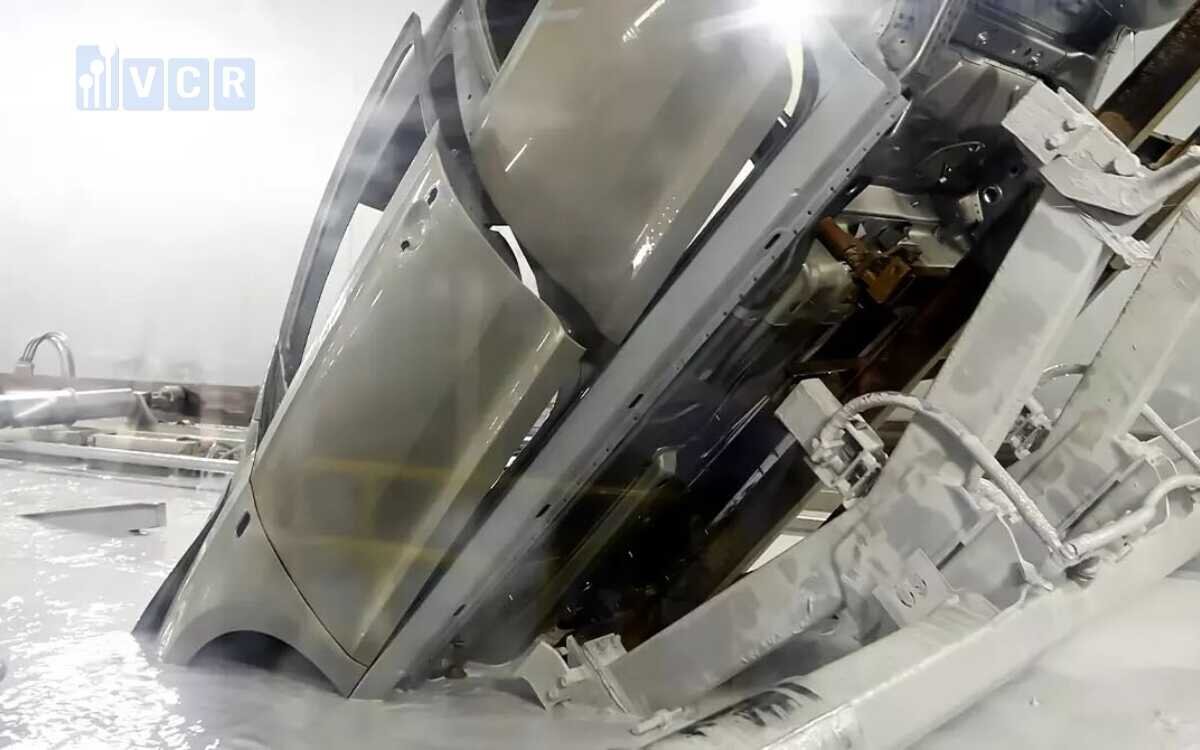
E-coating process
- Pretreatment involves cleaning the metal and applying phosphate to prepare it for e-coat application, ensuring it meets performance requirements. The worker selects the appropriate chemicals for pretreatment based on metal analysis. Typically, steel and iron parts undergo immersion in a high-quality zinc-phosphate system.
- Coatings are applied to the pretreated metal in the electrocoating bath using precise process control equipment. The bath comprises 80-90% deionized water and 10-20% paint solids, with water acting as a carrier for solids, including resin for corrosion protection and pigments for color and gloss.
- Post-rinsing follows, improving coating quality and recovering excess paint. During the e-coat process, regulated voltage is applied to achieve the desired thickness. Exiting the bath, excess paint solids are rinsed off to maintain efficiency. This "drag out" material is returned to the tank, ensuring application efficiency of over 95%.
- After post-rinsing, the coated part undergoes curing and cross-linking in a bake oven for optimal performance. The typical bake time is 20 minutes at 375°F, though they can apply a supplemental low-temperature cure e-coat depending on volume.
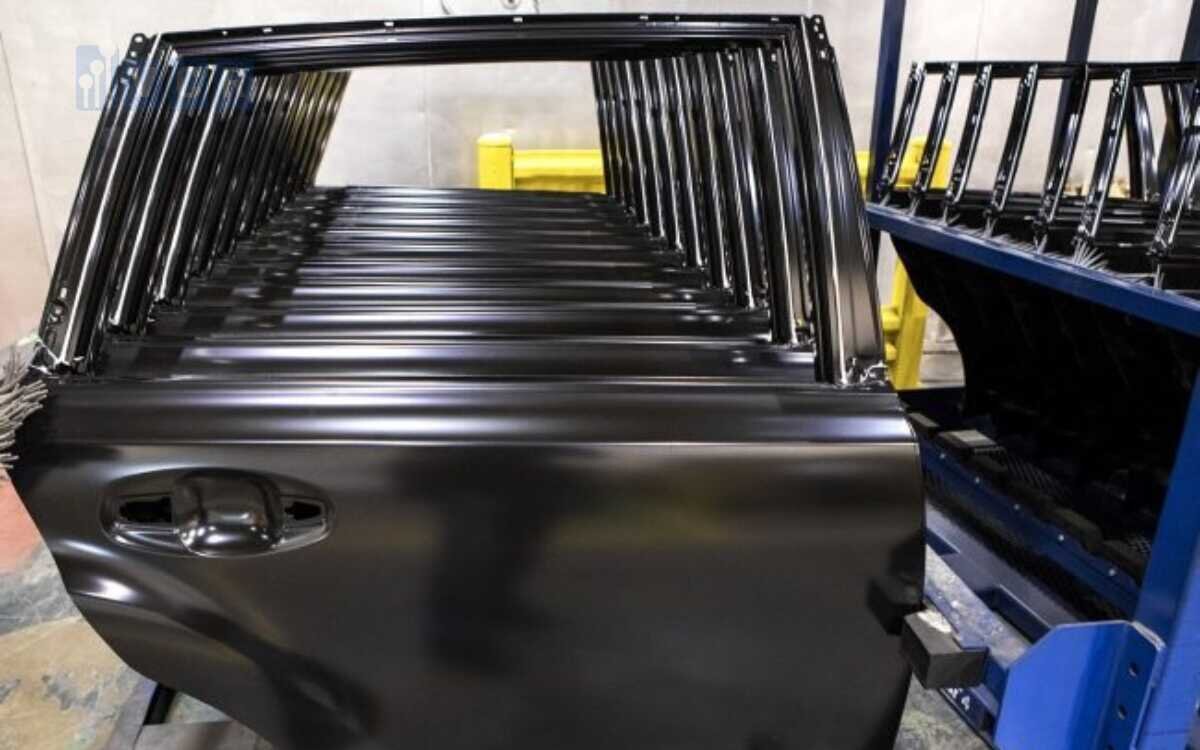
Benefits and key features
- Environmentally friendly: Using water-based solvents, minimizing toxicity and fire hazards.
- Energy and material saving: Low consumption with high efficiency.
- Easy automation: Compatible with modern industrial production lines.
- Uniform and flawless coating: Covers the entire surface, including small crevices.
- Excellent adhesion: Effectively resists metal corrosion.
- Durable: Withstands harsh environments, high humidity, industrial pollution, and marine environments.
- Wide applications: Suitable for various metals such as iron, aluminum, copper, zinc, etc.
- Paint quantity control: Minimizes material waste.
- High performance: Reduces loss by over 95% during application.
Common applications
- Automotive industry: used for coating automotive parts such as chassis, frames, and suspension components due to their corrosion resistance and durability.
- Aerospace industry: protects aircraft parts against corrosion and environmental degradation, ensuring their longevity and reliability.
- Appliances: manufacturing household appliances such as refrigerators, washing machines, and ovens to provide a durable and aesthetically pleasing finish.
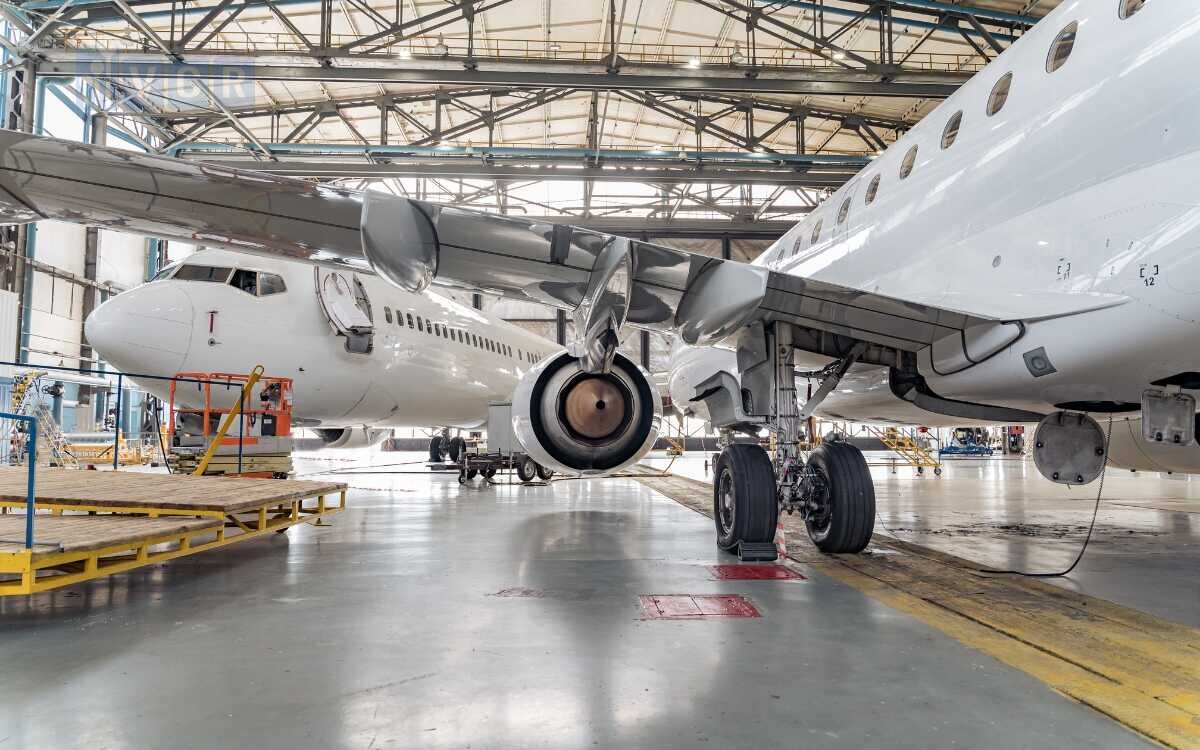
- Construction: coating architectural components such as window frames, railings, and structural steel to enhance their corrosion resistance and longevity.
- Electronics: coat electronic components and enclosures, providing insulation and protection against moisture, corrosion, and other environmental factors.
- Furniture: applied to metal furniture frames and components to provide a durable, scratch-resistant finish that enhances their appearance and longevity.
Choosing anodizing, Electrostatic painting, or E-coating for aluminum products?
Each method has its advantages and disadvantages, so when choosing which type of paint, we need to determine our needs to make a reasonable choice.
- Anodizing: Suitable for products requiring high durability, able to withstand harsh environments, and high aesthetic requirements (such as high-end aluminum doors, and interior decorations).
- Electrostatic painting: Suitable for products with cost requirements, quick application, and diverse colors (such as regular aluminum doors, metal roofing, ...).
- E-coating: Suitable for products requiring the highest durability, good heat resistance, and perfect surface protection (such as machinery casings, industrial equipment, ...).
Besides that, you should also consult reputable suppliers to choose the most suitable method for your needs and purposes.
Above are some basic knowledge and comparisons between 3 aluminum finishing methods: Anodizing, Electrostatic painting, and E-coating. Hopefully, this VCR article will help you have more grounds to choose the appropriate aluminum type for your project.






